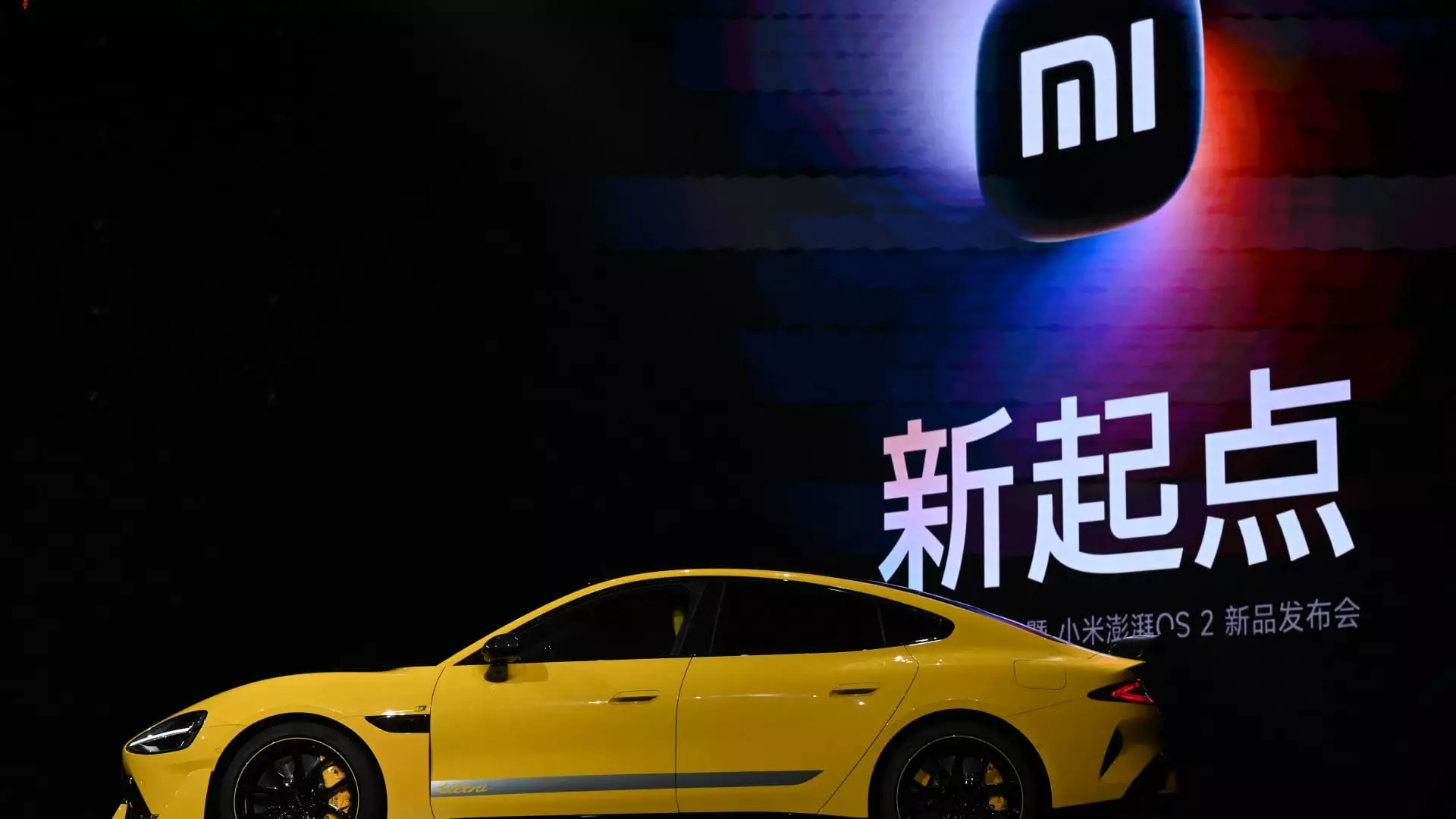In recent months, Xiaomi has emerged as a significant player in the electric vehicle (EV) landscape, managing to deliver more than 20,000 units of its SU7 model in October alone. The company, better known for its smartphones and home appliances, is attempting to navigate a fiercely competitive market that has been primarily dominated by heavyweights like Tesla, Nio, and Xpeng. By delivering over 75,000 SU7 vehicles since its launch, Xiaomi has quickly established itself as a formidable contender in China’s expansive EV sector.
Xiaomi’s foray into the automotive industry began in 2021 with the announcement of its plans to manufacture electric vehicles. The company built a dedicated manufacturing facility the same year to enhance its production capabilities. In March, the basic version of the SU7 was launched at a price point approximately $4,000 lower than the Tesla Model 3, which positioned it as an attractive option for cost-conscious consumers. This pricing strategy not only aligns with Xiaomi’s reputation for delivering high-quality products at competitive prices but also signifies a calculated move to capture market share from established rivals.
Maintaining a competitive edge is vital in a marketplace where pricing plays a pivotal role. With Tesla responding to Xiaomi’s initial pricing strategy by slashing the price of Model 3 by about $2,000, it becomes evident that the competition in this sector is relentless and fluctuating. Notably, Xiaomi’s ability to ramp up production quickly has allowed it to outpace competitors like Xpeng and Nio, who took considerably longer to reach similar production milestones.
Unlike Xpeng and Nio, which took approximately six years each to reach the 100,000 delivery threshold, Xiaomi has demonstrated a remarkable ability to scale its production capabilities. The company’s swift growth contrasts sharply with Tesla, which reached the same milestone after 12 years. This rapid turnaround raises questions about the operational efficiency of both competitors and highlights Xiaomi’s ambitions to challenge the status quo in the EV market.
Despite the competitive landscape, Xiaomi is not without its challenges. Nio, for example, has struggled to maintain consistent monthly delivery numbers, often falling below the crucial 20,000 vehicle mark. Meanwhile, Xpeng recently celebrated a record delivery month in September, largely buoyed by the launch of its lower-cost brand, Mona. Zeekr, a subsidiary of the Geely Group, also showcased its efficiency by achieving the same delivery milestone in just 1.5 years, further intensifying the competition.
Amidst these dynamics, Xiaomi recently announced the availability of the high-end SU7 Ultra, attracting over 3,600 preorders within a mere ten minutes. This model is set to be released in March 2025 and is positioned as a sports variant that targets an upscale consumer demographic. Analysts emphasize that the celebrity of this new model—especially its performance noted during testing at the Nurburgring race track—could serve to enhance interest in the existing SU7 Max model, which remains competitively priced at 299,900 yuan.
These announcements indicate that Xiaomi is investing heavily in innovation, focusing on performance to create a distinctive identity within the EV sector. The ability to draw consumer interest through product characteristics such as speed and design is critical in attracting enthusiasts and generating significant pre-order numbers ahead of the official launch.
Given Xiaomi’s ambitious target of delivering 100,000 SU7 vehicles by the end of November 2023, analysts have adjusted their expectations upward. Citi analysts anticipate a total of 250,000 vehicles produced in 2024, a substantial increase from previous estimates. This optimism reflects not only smartphone synergy post-launch but also enhances overall investor confidence in Xiaomi’s strategic direction.
As Xiaomi continues to focus on expanding its reach within the EV market, the importance of pricing, innovation, and consumer preferences cannot be understated. The path forward will undoubtedly be challenging as the company seeks to establish itself as a leader in an ever-evolving landscape. However, the positivity surrounding its early delivery capabilities and market strategies suggests that Xiaomi is well-positioned to make a lasting impact in the electric vehicle arena.

